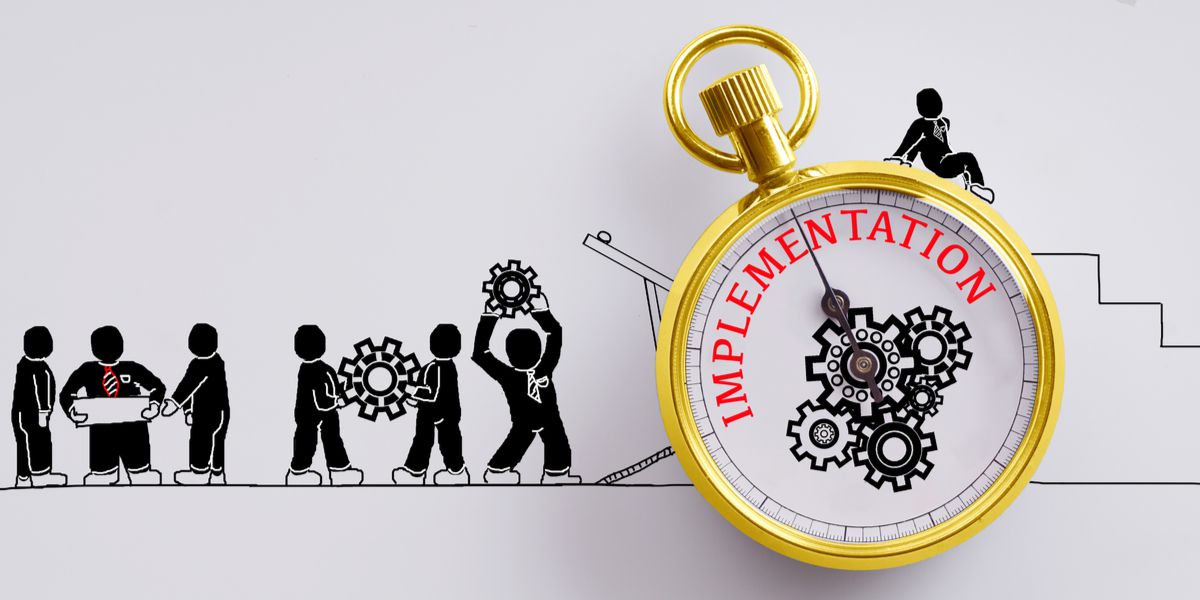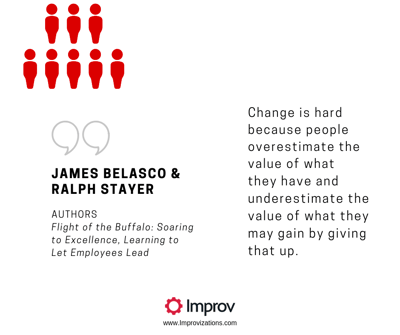

 Controlling your labor costs. Minimizing your compliance risk. Improving your productivity. If you're a manager, these goals are top of mind when it comes to implementing or upgrading a Workforce Management (WFM) platform. But what you may not be focused on during this major internal change is the emotional undercurrent among employees in response to that change.
Controlling your labor costs. Minimizing your compliance risk. Improving your productivity. If you're a manager, these goals are top of mind when it comes to implementing or upgrading a Workforce Management (WFM) platform. But what you may not be focused on during this major internal change is the emotional undercurrent among employees in response to that change.
It’s that emotional undercurrent, however, that influences implementation adoption and can determine whether your next WFM project soars or sinks.
The Cost of Change
According to Gartner, companies experience a 17% loss of productivity annually due to unsuccessful user adoption strategies. In addition, employees suffering from change-related stress perform 5% worse than the average employee, which translates to a $32.5 million ding per $1 billion in revenue.
“Leaders who put change management high on their implementation pyramid understand that the soft skills of listening, understanding culture, empathizing with employee fears, and communicating well are just as important as the technology at the center of the change,” says Bryan deSilva, Managing Director, Improvizations.

While management priorities around WFM Change Management can vary in focus and scope, at Improvizations, we’ve learned that effective end-user adoption is the most critical factor when it comes to reaching business goals and generating a solid ROI from your technology investment.
Intentional Building Block
But this doesn’t happen by chance. Change Management is an intentional, organized, powerful building block of a successful WFM implementation or upgrade. Improv’s proven methodology guides managers in setting goals, understanding employee fears, identifying potential obstacles, and building individual employee skills and confidence around a technology change.
5 Keys to Change Management
1. Define success. This is the first step in a change management strategy. What are your organization’s specific WFM goals? Who are the employees that need to be trained on the new software, and what does successful user adoption look like to you? Answering these key questions, gives your team a visual of your destination.
2. Assess threats. Change introduces fear, uncertainty, and friction in the strongest of organizations. Often technology gets the blame for the true cause of employee resistance, which is often the fear employees often associate with change. Employees faced with change may be thinking: Will this job automate or eliminate my job? Do I have what it takes to learn the new technology? How will this change affect my authority or responsibilities within the workflow? Effective change management includes identifying potential obstacles, which include the emotions around the internal shift.
Part of this step is to do reconnaissance; to dig deep in an effort to understand why a company’s culture is the way it is, and how well or poorly the organization has dealt with change in the past. It’s critical to talk to all the players and influencers across departments to unearth any reason at all the proposed change might fail.
3. Establish a road map. A detailed Change Road map identifies the challenges unique to your organization and the best ways to overcome them. In this phase, it’s important to make sure the tempo of the technical roll-out matches your organization’s capacity for growth and that future communications and training are designed to overcome potential obstacles. 
4. Communicate well. The best way to help employees deal with change — and get behind it — is through honest, transparent, and clear communication.
Key questions to ask/answer:
-
What will we communicate and with whom?
-
When will we communicate?
-
How will we collect, distribute, and share progress and forecasting?
-
How will we gather and distribute key information to mark and celebrate project phases?
5. Prioritize training. Effective training is an important piece of change management. Taking the necessary time to build employee skills in using new technology is critical to adoption and delivering value. Equipped employees are engaged employees and engaged employees can make or break your business goals tied to your WFM technology. A comprehensive training strategy includes a training plan, resources, educators, and a curriculum.
Let’s Talk Change Management
Are you implementing a new WFM platform? Are you contemplating an upgrade to an existing platform? Improv’s Change Management experts will help you develop custom training programs that engage your employees in ways that speak uniquely to your culture.
The Improvizations team of creative Kronos consultants can help with all the issues that arise (and often sabotage) the implementation process. Our Change Management professionals will link arms with you to champion a successful implementation or upgrade.
Let’s get started today!
Download our Change Management One Sheet for more information.

.png)
.png)
.png)
Comments